Keith Thomson's Blog, page 10
July 13, 2014
Buzz Aldrin’s UFO Sighting

Buzz Aldrin, post moonwalk. SOURCE: Wikipedia.
Sunday, July 20 is the 45th anniversary of the 1969 Apollo 11 moon landing, as well as—according to half the Internet—the best-ever sighting of alien spacecraft, by astronaut Buzz Aldrin. Here's the relevant part of the conversation between Aldrin and NASA that was overheard by ham radio operators (according to the site Above Top Secret):
Mission Control: What’s there ? Mission Control calling Apollo 11.
Apollo 11: These babies are huge, sir … enormous…. Oh, God, you wouldn’t believe it! I’m telling you there are other space craft out there… lined up on the far side of the crater edge… they’re on the moon watching us.
At the same time, NASA's live television broadcast of this segment of the moon mission was interrupted by an "overheated camera." To many, that smacked of editing by the United States government, believed since the 1947 Roswell landing to be keeping close encounters secret in case the aliens had technology that the military could use against the Russians.
This begged the question:
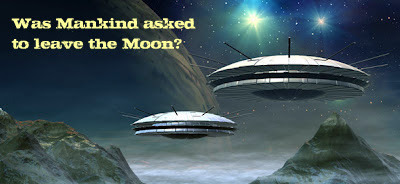
Conspiracy theorists treated the question as rhetorical. Which led to "renderings" like this:

SOURCE for this image and above: Educating Humanity
Last week, Aldrin said the following in the course of a chat on Reddit:
On Apollo 11 en route to the Moon, I observed a light out the window that appeared to be moving alongside us. There were many explanations of what that could be, other than another spacecraft from another country or another world -- it was either the rocket we had separated from, or the 4 panels that moved away when we extracted the lander from the rocket and we were nose to nose with the two spacecraft. So in the close vicinity, moving away, were 4 panels. And I feel absolutely convinced that we were looking at the sun reflected off of one of these panels. Which one? I don't know. So technically, the definition could be "unidentified."
So did the government get to Aldrin? Or was it the aliens themselves?
Related link: My True Area 51 UFO Story
July 7, 2014
Hovercars in Israel
Here a few details of the forthcoming hovercar system in Israel, operational in 2015. Initially the cars will go about 43 miles per hour, following a 1,640-foot-long test guideway at the Israel Aerospace Industries campus.

Once testing is complete, the city of Tel Aviv will construct a 4.3-mile-long guideway, with 2-seater cars capable of 150 mph. If and when that succeeds, traffic as we know it will fade into history.

There are no cup holders, however.
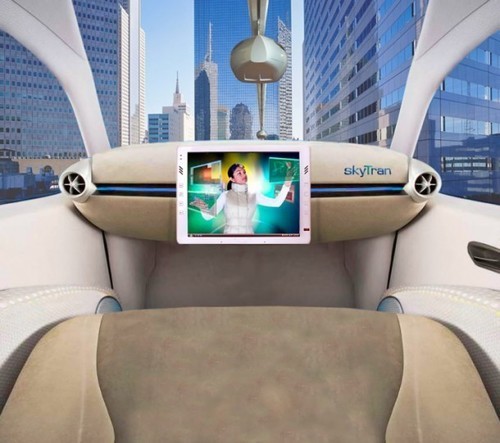
For actual information, see skyTran's site and/or check out my gallery of UAVs (a.k.a. drones), commercial planes and flying cars.
June 28, 2014
Some of the Best Writing Out There: Gas Station Bathroom Walls
Let’s begin with a few examples…
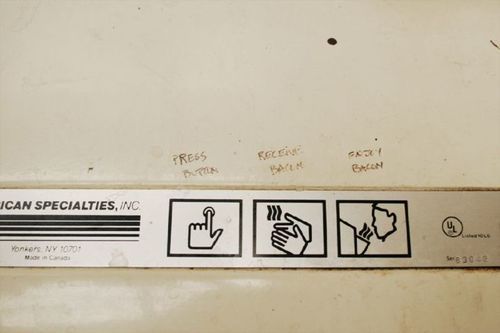

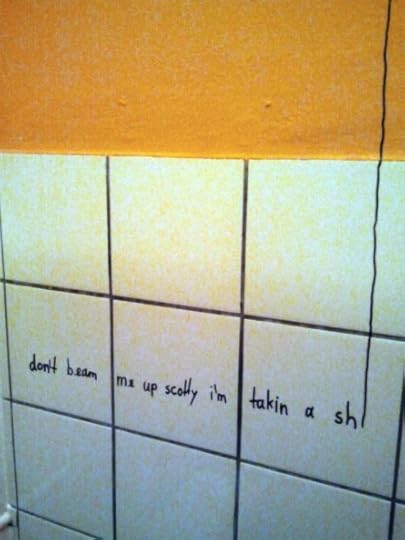







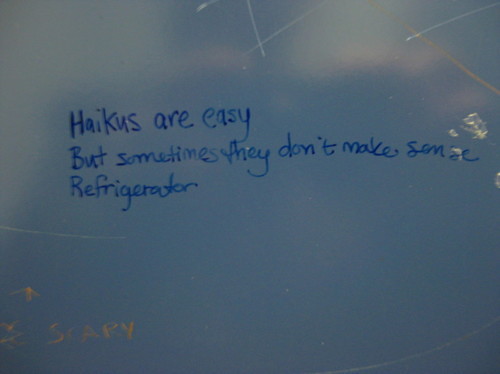



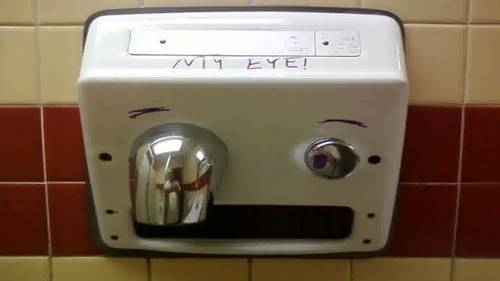

Now, group…

…and/or provide an original ending to this bathroom standby:
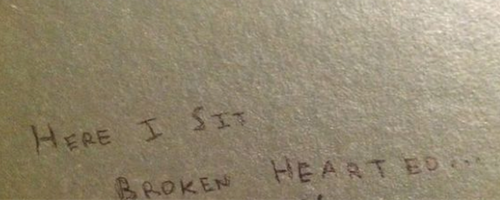
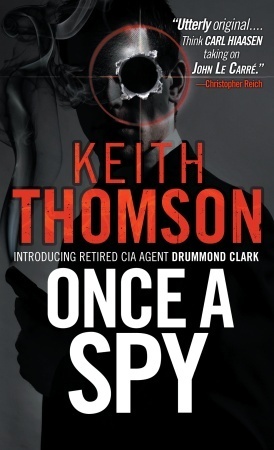
June 26, 2014
The Greatest Dogfight Never
What happened to this pilot?
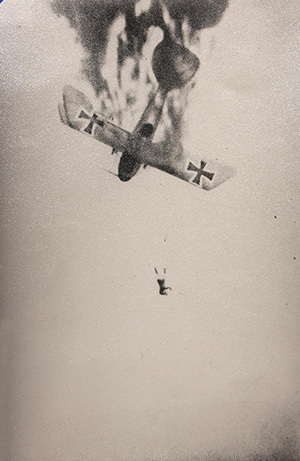
He had no parachute, he did not land in a soft spot like a haystack, but he was uninjured. How is that possible?
Clues may be found in a couple other photographs from the same dogfight, which came from Mrs. Gladys Maud Cockburne-Lange, widow of the WWI flying ace for the British Royal Flying Corps who strapped a camera to his plane and filmed this European sky action.
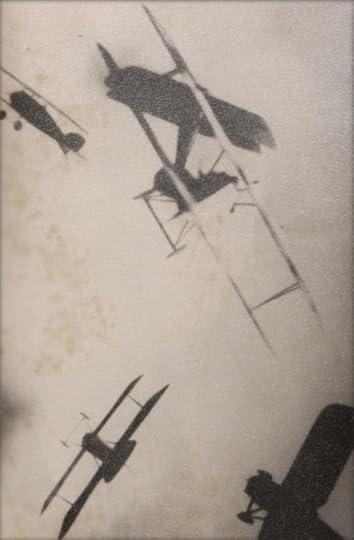
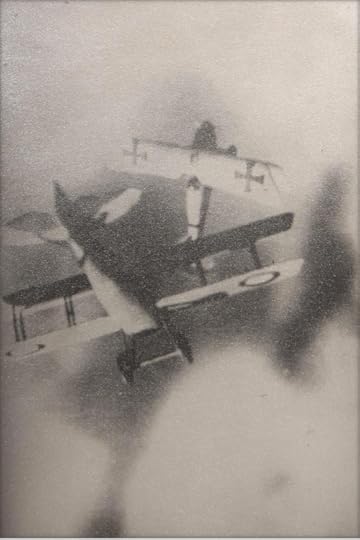
After the war, the widow Cockburn-Lange sold the photos to a magazine for $20,000. The photos are fake, however. In 1984, a donation to the Smithsonian by American pilot David Archer, who was also a Hollywood special effects ace, included evidence that he'd been in cahoots with the widow Cockburne-Lange, if she even was a widow, or even named Cockburne-Lange.
Related Links: The Theft of Mata-Hari's Skull
June 24, 2014
The Best Baseball Game this Year

In 1991, Chicago's Comiskey Park became a parking lot (for the new Comiskey Park). Thus Birmingham, Alabama's Rickwood Field, which turns 104 this season, earned the distinction of America's Oldest Professional Baseball Stadium. The home of both Birmingham's Barons and the Black Barons of the Negro Leagues had essentially stood empty since the Barons (now a White Sox double-A affiliate) moved to the suburbs in 1987. And the wrecking ball loomed.
Enter a group of young Birmingham professionals who might have gotten together for bowling or pizza. But they cherished childhood memories of storybook sunny days spent in Rickwood's grandstand, rooting for the home team.
Moreover, they viewed Rickwood as a treasure. You could step into the park, they felt, and, without trying, practically channel the 10,000 Coal Barons boosters who overflowed the stands on Opening Day in 1910. You could breathe a bouquet of talc, freshly-poured Stroh's beer, and broiling woolen suits. You could hear the hurrahs -- you might even catch a suggestion that the umpire have his spectacles checked. A resounding crack of the bat was almost a certainty. Then you kept an eye cocked, half-expecting a Ty Cobb to charge, like a locomotive, after a fly ball.
Cobb played at Rickwood, as did Babe Ruth and Ted Williams. Satchell Paige graced the mound. Willie Mays began his career as a Black Baron. As an Oakland (then Kansas City) A's minor leaguer posted to Birmingham, Reggie Jackson belted balls, it seemed, to Oakland. And on barnstorming tours or stopovers to and from spring training, many more Hall of the Famers dug spikes into Rickwood's diamond.
Lynryrd Skynrd played there, too -- a concert in 1974 included the group's new song, Sweet Home Alabama. Baseball was just part of Rickwood's history. Alabama and Auburn's football squads used to meet on Rickwood's gridiron. Chapters of the Civil Rights story took place at the park as well: It was singular as a venue for civic pride, both black and white.
"We couldn't let something as beautiful and significant to our city as Rickwood be torn down," said Tom Cosby. In 1991, Cosby was a vice president at the Birmingham Chamber of Commerce. He joined the group of young professionals who set about restoring Rickwood to its heyday.
The first step was getting into the park. It was locked.
The group went to City Hall and pleaded to Mayor Richard Arrington that Rickwood was "a national treasure that wasn't just unique in baseball, but unique in general." They came away with a 99-year lease at one dollar per year.
Some people considered it a lousy deal.
The roof was caving in, the grandstand was crumbling, and the field looked like it had hosted a war. Also the locker rooms were furnished to the tastes of the disco era, and dilapidated. Similarly, many of the vintage wooden seats -- imported from the Polo Grounds when that historic ballpark was razed -- had been discarded and replaced with garish ("interstate highway orange," as Cosby puts it) plastic ones, which birds had been using as restrooms for years.
Cosby's group, the non-profit Friends of Rickwood, rolled up their sleeves and fixed and scrubbed whatever they could, possibly putting more sweat into the park than any team that played there. With $2 million they raised, they also restored the stadium's majestic, spearmint-green facade, rebuilt the grandstand roof in painstaking period detail, revitalized the hand-operated scoreboard, constructed a new (though antique in feel) press box, and installed memorabilia displays. Then they opened to visitors.
In 1993, Rickwood Field was added to the National Register of Historic Places. Warner Brothers selected it as a principal location for the movie Cobb. And USA Today listed it among its "10 Great Places for a Baseball Pilgrimage."
In 2004, during his first visit in forty years, Willie Mays stepped to the plate, looked the park over and remarked that it hadn't changed. Which perhaps best summed up the Friends of Rickwood's accomplishment.
But their job had barely begun.
"The challenge is that of an old house, on the grandest scale," says David Brewer, the Friends' Executive Director.
Contributions from the city, along with field rental fees for the 80 or so high school and college games played at Rickwood each season, constitute the bulk of the park's annual $150,000 budget. Which hardly covers the maintenance. According to another of the volunteers, "It's mostly done with shoestrings and gum and chicken wire."
One of Rickwood's greatest benefactors is its ex-tenant. For fourteen years, the Barons have played one game per season at Rickwood. The 6,500 tickets sold on average have provided a huge boon to Rickwood. And the "Rickwood Classic" is no mere game. Watch players bound onto the field in flannel uniforms, hear jazz piped through the funnel-shaped speakers, lick a snowcone, and good luck convincing yourself that, on the way from the parking lot, you did not pass through a wormhole in time to 1910.
ESPN recently ranked the Rickwood Classic among "101 Things All Sports Fans Must Experience Before They Die."
The 2014 Rickwood Classic, pitting the Barons and Mississippi Braves, will be played on Wednesday, June 25, at 12:30. Tickets are still available. I got your snowcone.
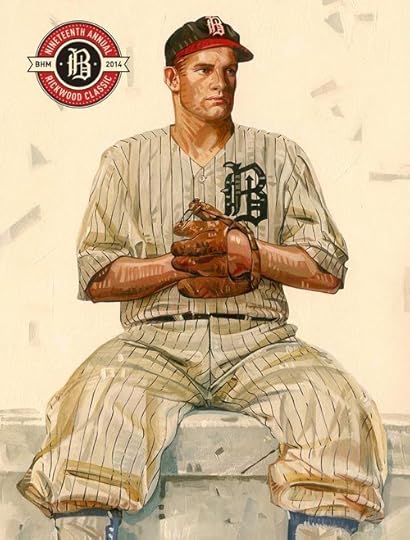
June 15, 2014
Bike Tries to Fly over Plane
At an air show last week in Cameron, Missouri, a dirt biker looked to out-Evel-Knievel all previous daredevils by jumping over a flying plane. But the key to the stunt was the pilot of the single-engine biplane…
News coverage shows the stunt from another angle, in slow-mo:
Related links: Once a Spy
June 14, 2014
A Day at the Beach Gets Harrier
Ever wonder what would happen if you're swimming in the ocean and a hovering Harrier jet experiences catastrophic mechanical failure and plunges in with you?
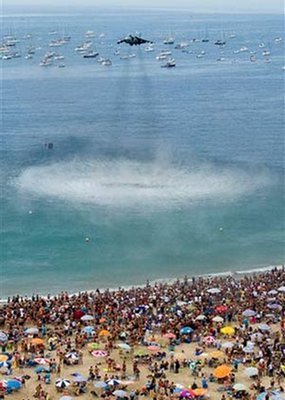

There is a good case study, from the 2002 Lowestoft Seafront Air Festival in Suffolk, England. An RAF GR-7 was hovering feet above the water and…
The pilot was fine—a lifeboat picked him up. The aircraft was hauled out with minimal damage. Better this sort of thing happens over water than tarmac (see below F/A-18 link for a case study re: that).
Related Links:
Amazing F/A-18 crash (photos, VIDEO);
Unfreakingbelievable Helicopter Crash (photos, VIDEO)
Once a Spy (experience a two-chapter-long helicrash)
June 8, 2014
Father’s Day Gift Guide
Stuck on what to give Dad (or me)? Here are a few ideas:
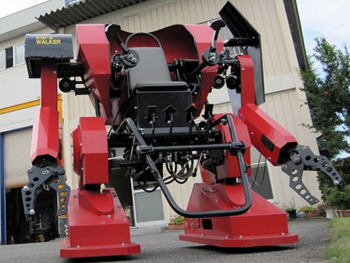
A new shirt—that's part of a robotic exoskeleton
![A radio-controlled model plane [Details]](https://i.gr-assets.com/images/S/compressed.photo.goodreads.com/hostedimages/1402238653i/9910801.png)
A radio-controlled model plane [Details]
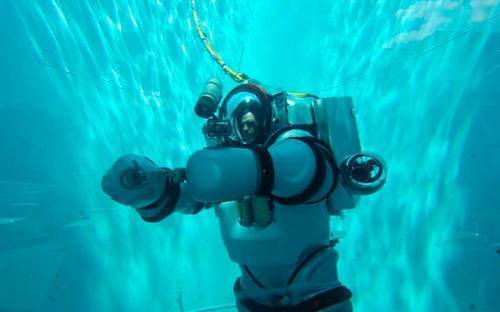
A swimsuit
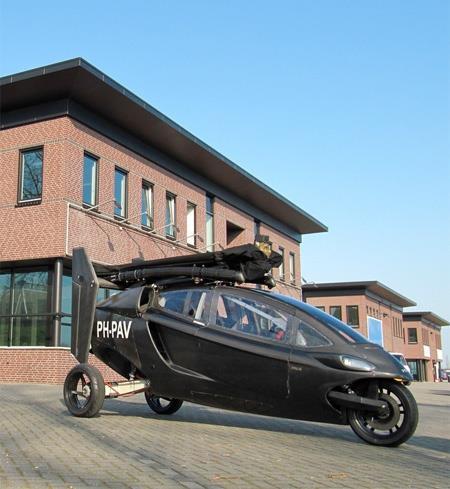
If Dad needs both a sports car and a helicopter: a PAL-V
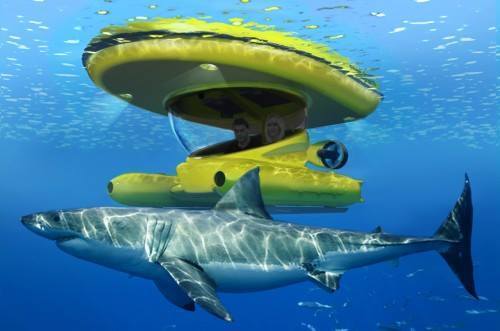
Things for the beach, like an amphibious MSV Explorer
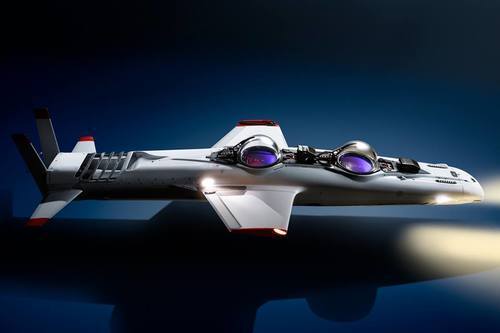
Or a Deep Flight Falcon personal sub
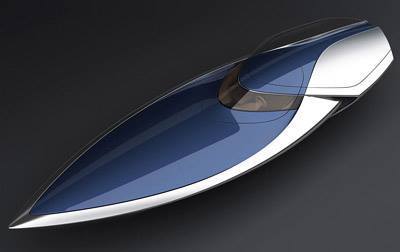
Or a Bugatti Veyro Sang Blue speedboat

Or an EkranoYacht—it can fly!

Speaking of flying, the Volta Volaré hybrid: goes 300 miles on battery and 700 more on 1.5-liter gas engine. And has red windows.

Riot control trucks are also great on hot summer days!
![Most guys who have everything don't have giant nuclear-radiation-proof battlebots from military surplus [Details]](https://i.gr-assets.com/images/S/compressed.photo.goodreads.com/hostedimages/1402238653i/9910810.jpg)
Most guys who have everything don't have giant nuclear-radiation-proof battlebots from military surplus [Details]
![A father-and-son story [Details]](https://i.gr-assets.com/images/S/compressed.photo.goodreads.com/hostedimages/1402238653i/9910811.jpg)
A father-and-son story [Details]
June 4, 2014
The InflatoPlane
Incredibly, this actually existed—an inflatable aircraft manufactured for the Army by Goodyear Tire and Rubber. Testing began in 1956 for a variety of military applications, including reconnaissance and escape and evasion, the idea being to parachute-drop it to troops stuck behind enemy lines. It took five minutes to inflate with a simple hand pump…
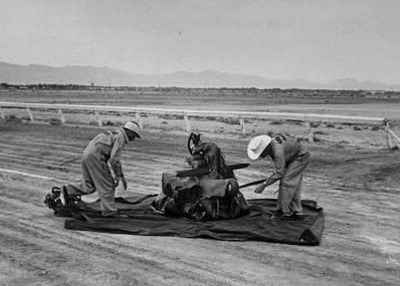
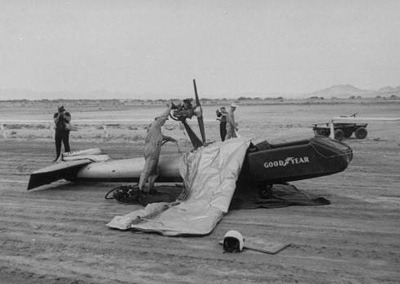
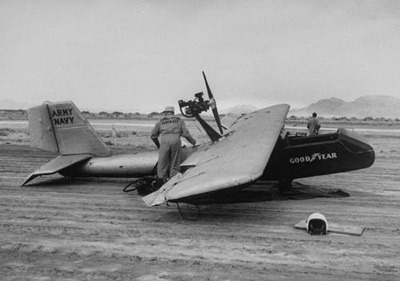
…The pilot then hand-started a 40-horsepower engine and, with 300 feet, could take off. 20 gallons of fuel brought a range of 500 miles.
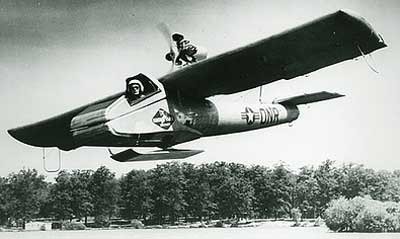
Here's video of, basically, the same process, plus flight.
Twelve Inflatoplanes were built before the project was cancelled in 1973 because the aircraft proved vulnerable to any enemy with a bow and arrow, let alone bullets.
Related Links: 30-Second War Story,
June 1, 2014
The Theft of Mata Hari’s Skull

Mata Hari
In 1917, Margaretha Zelle, the spy better known as Mata Hari, was executed by firing squad. Her skull became part of the collection at the Museum of Anatomy in Paris. In 2000, the museum's archivists discovered that the skull was missing, probably stolen. The case remains unsolved.
I wondered: Why would anyone steal a skull? Or even want one?
Little did I know. Skull collecting is a veritable subculture. One man's macabre relic is another man's Roger Maris sixty-first home-run ball.
And craniomania is nothing new.
In Cranioklepty (Unbridled Books, 2009), author Colin Dickey explains: "From 1790 to the mid-nineteenth century, interest in phrenology sparked a bizarre and intense fascination with the human skull, and in particular the skulls of great men."
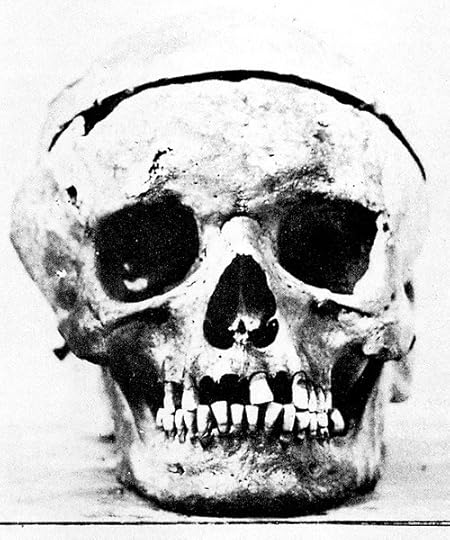
Beethoven's skull
It drove other men to skullduggery, literally. Notable victims include composers Franz Joseph Haydn and Wolfgang Amadeus Mozart, and English philosopher Thomas Browne. According to Dickey, Browne stands as an icon in the history of cranioklepty because of his concern over the desecration of his final resting place. "Who knows the fate of his bones, or how often he is to be buried?" Browne wrote, adding, "To be gnawed out of our graves, to have our skulls made drinking-bowls, and our bones turned into pipes to delight and sport our enemies, are tragic abominations."
In the course of my investigation of this realm, I learned that Ludwig van Beethoven's skull is for sale.
The seller is California businessman Paul Kaufmann, who first became aware that his family possessed the item in 1990. While searching among his late mother's possessions, he happened on an ancient, pear-shaped box labeled "Beethoven."
Years of investigation by historians and scientists make a compelling case that the box was labeled accurately. Exhibit A: Kaufmann's great-great uncle was a physician closely involved in the 1863 exhumation of Beethoven (and Franz Schubert) largely for scientific study; according to several accounts, the physician kept Beethoven's skull. Exhibit B: Tests of existing strands of the composer's hair point to a DNA match. For Exhibits C through Z, see Dickey's book.
According to Dickey, it's difficult to place a cash value on Beethoven's skull. In 1978, a skull purported to belong to theologian Emanuel Swedenborg sold at Sotheby's for $3,200. Kaufmann expects to get $100,000.
"Out of respect for the dignity of Beethoven," Dickey says, "I think most people would be happy to see [the skull] go to some resting place." An obvious choice would be Vienna's Central Cemetery, where the rest of Beethoven's body is interred.
Either way, there is new meaning in the Chuck Berry lyrics "Roll over Beethoven and tell Tchaikovsky the news."
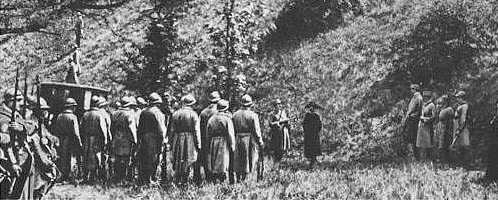
Mata Hari's execution by firing squad, October 15, 1917
Note: There is lots of phrenology and other skullduggery in the novel 7 Grams of Lead.



